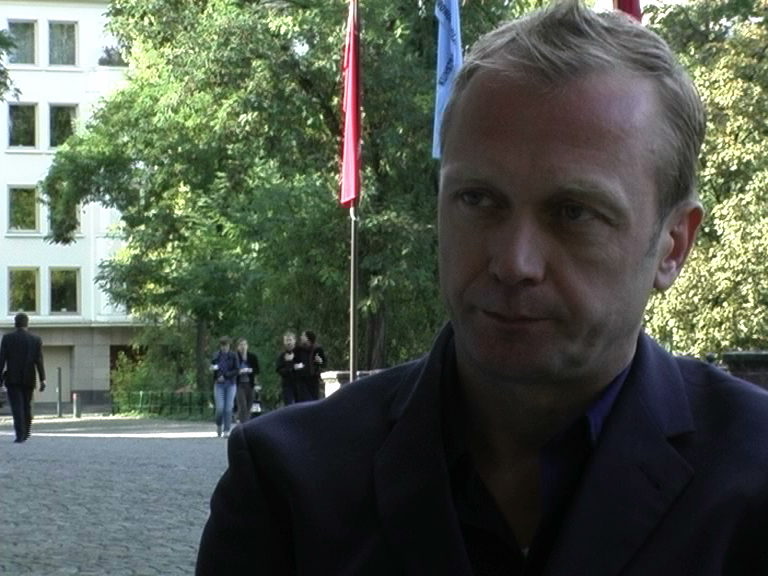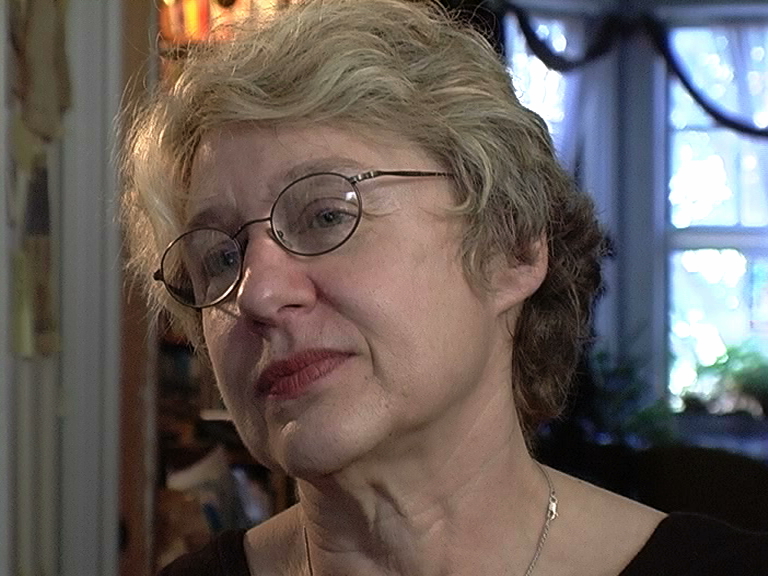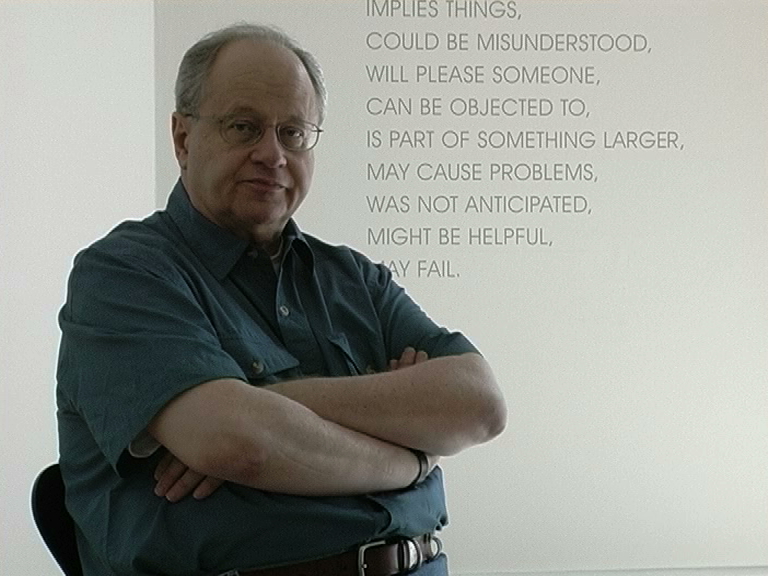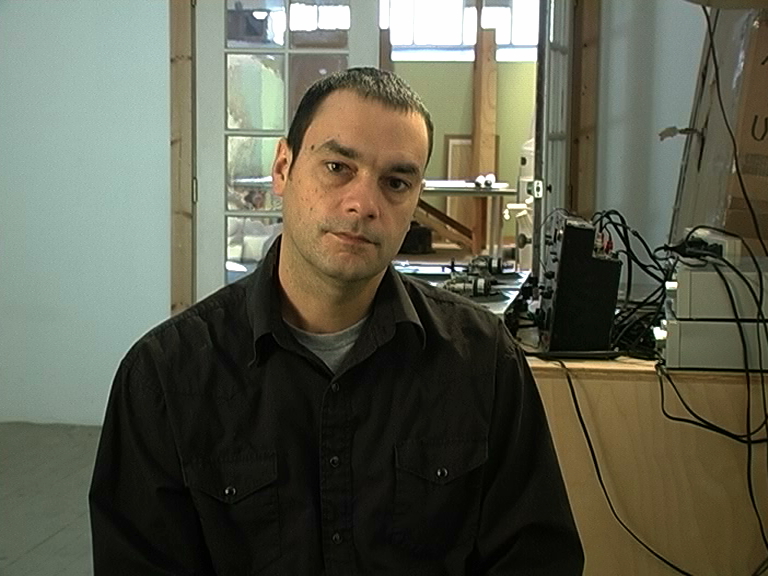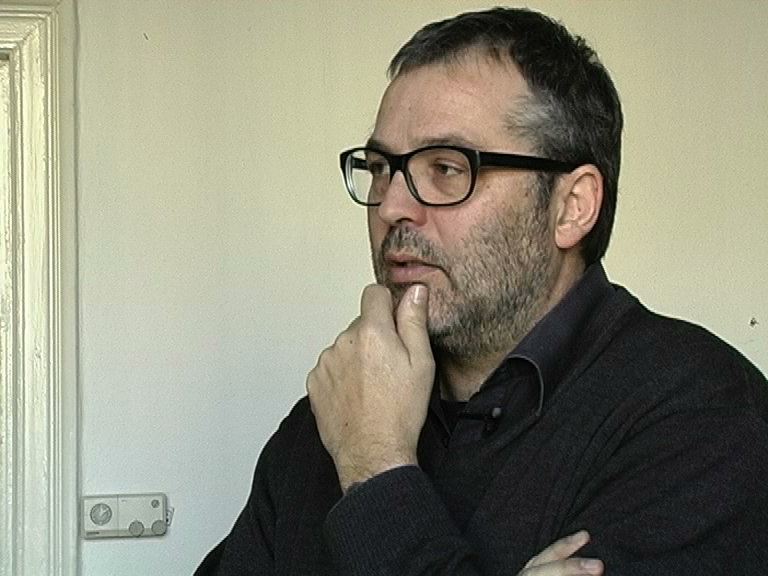S.R.: How do you conceive your own work intellectual or conceptual relations?
S.S.: I would say it’s about banality. It’s about me, my experiences, which are very ordinary like the next person. So it could be an interaction, it could be an effect of something that has happened around me, maybe personally, or then in the country, in the world. In that way I would say it is about the banal.
S.R.: In your position, is there something what you would call an influence on your work?
S.S.: A strong influence or do you mean from the art field?
S.R.: From the art or something else?
S.S.: I wouldn’t that the art work actually is directly influenced, by lets say something that I see. But not in particular, but of course influence is what determines your experience, I mean how you conceive an art work is something which is not a potent influence but a latent influence which stays with you. It would be something that you see, you hear, something like art theory which has been tutored. Or I mean it wouldn’t be something that you do consciously but something that you cannot deny. And then in retrospect you understand what the influence was for doing a particular art work. But I wouldn’t talk about an ism or an artist’s work which is directly sort of influenced the practice.
S.R.: Can you figure out something like the aim of your practice?
S.S.: In retrospect maybe but consciously no. I wouldn’t say, something happened and then I aimed to sort of portray that with this work. That is not a conscious thing. But in retrospect when I see, o.k., this work I had done at that time and this is what had happened around that time, and maybe because I was dwelling on what was happening, hence this kind of work might have evolved.
S.R.: When did you hear the first time something about Conceptual art?
S.S.: In school I guess, in art school.
S.R.: Was it importnat for you?
S.S.: It was part of your curriculum which was not really explained, so you had to go into libraries and do it yourself. And there is this book which I had read, which was in the library: Art since the 1940s, or something. It was like this little book which had five pages on almost, almost every important western artist was mentioned in it. It was an interesting book, because for once you realized that what you didn’t want to do is also not necessarily what you have to do. I’m talking about, in art, the school-situation – I guess you know about the kind of art school which I’m talking about from Bombay – which is completely academic. I didn’t feel the need to do that kind of work, which was portraiture or whatever, really basic kind of academic work which one has tutored. I just felt that that was not what art should be about. It didn’t make sense. Actually, it’s almost like a coffeetable-book which was, it was called, I don’t remember the name of the author, but it was called: “Art since the 1940s.”
S.R.: Do you think that your conceptual paradigms are still in function?
S.S.: I’m kind of sceptial about putting it under conceptual work, or any, because then you have just the way of making art which becomes more important than the art work or what it is trying to say. So I feel that it’s not necessary to, I mean even my work, I wouldn’t necessarily call it conceptual work. Because it’s work and it’s done at a period. I could give an example of one of my works which now – which is just four years after I made the work – I feel it doesn’t really talk about the same issues and it might fails from when I did it, and this is just four years. I think I showed you an image of this Sari which I had made from Coca-Cola tops. And at that time I was trying to talk about how Coke in India is an elitist product. This was in 96 when I started looking at Coke as an elitist thing. But then hardly about two years ago, after the urban markets were captured by these big companies, they started looking further, because you know hardly about 20% of the population is in urban city. They had this entire new campaign of advertisements, and the price of Coke went from 10 to 5. So it became totally accessible to even the poor people. And then when I make a work which says, Coke is elitist, now if I look at that work it seems completely wrong. The work really functions at the time when you do it and for the reason when you do it, and after that sometimes it just becomes something of the past.
S.R.: Did I get it right: a coke-sari?
S.S.: Yes, the Coke-Sari, the handmade Sari.
S.R.: How would you describe your ideal typical daily work as an artist?
S.S.: I don’t work every day as an artist. Honestly (laughs). I sort of, when I have project, when there is an exhibition for which I have to finish a particular work, I am working as an artist. Also the kind of work I do, it doesn’t fall under this bracket of studio-practice kind of work at all. So it could be travelling; it’s not as if I’m not working when I’m not physically working. It’s meeting people, looking at things, making my influences, listening to TV is a big part of my life, I mean flipping channels is a big part of my life. Out of the 73 channels which you get on my TV at home on the cable network, I definitely know on which channel which of the news is. I don‘t know the rest of the channels necessarily. So, if you want to call that my artist’s practice, then it is but you know. Reading is a part of my daily life, sitting on the internet is a part of my daily life, spending time with my familiy is a part of my daily life. I guess I’m not a typical artist. I don’t know if I am an artist. I do these things sometimes which are art, which by my definition are art. That’s a tough one.
S.R.: When you go to the studio what do you do?
S.S.: I don’t have a studio. I can’t afford one, for one. If I’m sitting at home I think more art happens at home than sitting in a so-called studio. I could be, this work which you see here, it happend – it’s called “Hand-picked Rejects” – it’s in continuation to the earlier works which I have done. That’s the one thing; I try to sort of have a continuity with the titling because then I sort of are two or three genres of work which I do. The next work which I do may not necessarily completely be an extension of this work but it could be of an earlier work. So when I look back at my works and I see these two, three kinds of works which I‘m doing.
S.S.: This is going back to your earlier question. I don’t know if I should handle it now. The things I do on an everday-basis, like eat or wear clothes, go out, dress – just exist, live, because I’m alive, I live. These are the things which inform the work that I do. The best way to a sort of, obsession about doing work would be look at the banality of my life, and that’s where the work comes from.


























